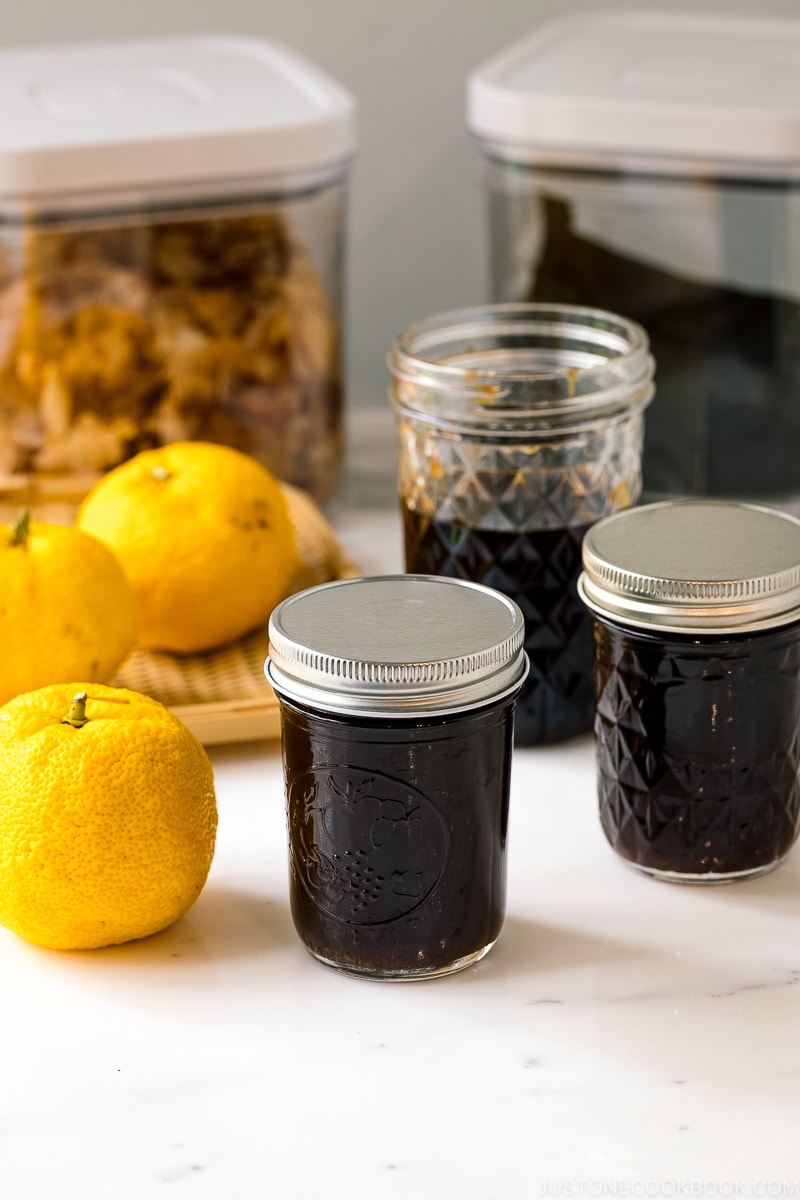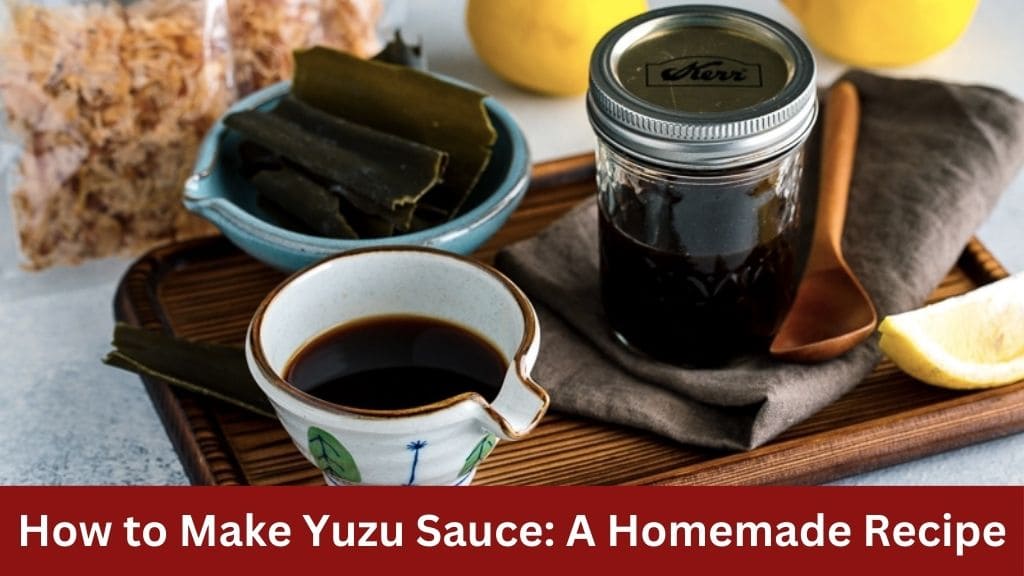Yuzu sauce, with its vibrant citrus flavor and versatile usage, adds a unique touch to a variety of dishes. Whether used as a dipping sauce, salad dressing, marinade, or drizzled over rice, this homemade condiment elevates the dining experience. In this comprehensive guide, we’ll delve into the process of making yuzu sauce from scratch, exploring ingredients, preparation methods, and helpful tips to ensure a flavorful outcome.
Yuzu sauce, also known as yuzu ponzu, originates from Japanese cuisine and features the distinctive taste of yuzu fruit. Its flavor profile combines bright citrus notes with savory and slightly sweet undertones, making it a favorite among food enthusiasts seeking complexity and depth in their dishes.
Why Make Homemade Yuzu Sauce?
- Quality Control: Crafting yuzu sauce at home allows you to control the quality and freshness of ingredients, ensuring a superior taste compared to store-bought alternatives.
- Customization: Homemade recipes offer flexibility in adjusting flavors according to personal preference, allowing experimentation with ingredient ratios and additional seasonings.
- Cost-Effectiveness: While yuzu fruit may be exotic and expensive, making yuzu sauce at home can be a cost-effective alternative to purchasing pre-made versions, especially when prepared in bulk.
Ingredients for Yuzu Sauce

Before embarking on the yuzu sauce-making journey, it’s essential to gather the necessary ingredients. Here’s a list of what you’ll need:
- Yuzu Juice: 1 cup, preferably freshly squeezed for optimal flavor. If fresh yuzu fruit isn’t available, bottled yuzu juice can be substituted.
- Kombu: 2 (2-inch) pieces, a type of edible kelp that adds umami richness and depth to the sauce.
- Bonito Flakes: 1 cup, also known as katsuobushi, these dried, fermented fish flakes contribute a smoky flavor to the sauce. For a vegan option, dried shiitake mushrooms can be used as a substitute.
- Soy Sauce: 1 cup, provides saltiness and enhances the savory profile of the sauce.
- Mirin: ¼ cup, a sweet rice wine that adds a delicate sweetness and depth of flavor.
- Rice Wine Vinegar: 2 teaspoons, offers acidity to balance the other flavors and aids in preserving the sauce.
Preparation Method

1. Prepare the Jars
Before assembling the ingredients, it’s crucial to ensure that the jars you’ll be using are thoroughly cleaned and sterilized. Proper sterilization helps prevent contamination and extends the shelf life of the yuzu sauce. You can sterilize the jars by washing them with hot, soapy water and then submerging them in boiling water for a few minutes or by running them through a dishwasher cycle.
Once the jars are sterilized, it’s time to add the ingredients. Place the pieces of kombu and bonito flakes (or dried shiitake mushrooms) into each sterilized jar. These ingredients serve as the flavor base for the yuzu sauce, imparting umami richness and depth of flavor.
2. Combine Ingredients
After adding the kombu and bonito flakes to the jars, it’s time to combine the remaining ingredients. Pour equal amounts of yuzu juice, soy sauce, mirin, and rice wine vinegar into each jar. These ingredients contribute to the complex flavor profile of the yuzu sauce, balancing the tartness of the yuzu juice with the saltiness of the soy sauce, the sweetness of the mirin, and the acidity of the rice wine vinegar.
Ensure that the kombu and bonito flakes are fully submerged in the liquid to extract maximum flavor. If necessary, gently shake each jar to distribute the ingredients evenly and ensure proper submersion.
3. Allow Melding
Once all the ingredients are combined in the jars, it’s time to let the flavors meld. Refrigerate the jars for at least 24 hours to allow the ingredients to infuse and the flavors to develop. During this time, the kombu and bonito flakes release their savory essence into the sauce, creating a rich and aromatic condiment.
Avoid exceeding the 24-hour resting period, as prolonged exposure to the kombu can result in undesirable texture changes, such as sliminess.
4. Strain and Enjoy
After the resting period, it’s time to strain the solids from the liquid to create a smooth and flavorful yuzu sauce. Use a fine-mesh sieve or cheesecloth to strain out the kombu and bonito flakes, leaving behind a clear, amber-colored sauce.
Transfer the strained yuzu sauce back into the sterilized jars for storage. The sauce can be enjoyed immediately, but it will continue to develop in flavor over time. Refrigerate any unused portion for future use, where it can last for 6-12 months.
Tips and Variations

1. Evaporate Alcohol
Some individuals may be concerned about the alcohol content in mirin, a sweet rice wine used in yuzu sauce. To address this concern, you can choose to evaporate the alcohol before adding mirin to the sauce. This can be achieved by gently heating the mirin in a saucepan over low heat, allowing the alcohol to evaporate while preserving the complex flavors of the rice wine. Alternatively, you can opt for nikiri mirin, which is mirin that has already been boiled to remove alcohol.
2. Citrus Substitutions
While yuzu juice is the traditional choice for making yuzu sauce, it may not always be readily available. In such cases, you can experiment with other citrus fruits as substitutes. Lemons, limes, oranges, or even a combination of these fruits can be used to create a flavorful citrus sauce. Adjust the proportions of the ingredients accordingly to achieve the desired flavor profile, keeping in mind that each citrus fruit may impart its own unique characteristics to the sauce.
3. Sterilization
Proper sterilization of jars is essential for maintaining the freshness and longevity of homemade yuzu sauce. While this recipe does not involve canning, sterilizing the jars helps prevent contamination and extends the shelf life of the sauce. To sterilize the jars, wash them with hot, soapy water and then either submerge them in boiling water for a few minutes or run them through a dishwasher cycle. Be sure to dry the jars thoroughly before adding the ingredients.
4. Adjust Sweetness
The acidity of yuzu juice can vary, and over time, the tartness may mellow, resulting in a less tangy sauce. If you prefer a sweeter yuzu sauce or if you notice that the acidity has diminished, you can adjust the sweetness by adding a touch of sugar. Simply dissolve sugar in the sauce to taste, stirring until fully incorporated. This simple adjustment can help balance the flavors and enhance the overall enjoyment of the sauce.
5. Flavor Infusion
For those looking to experiment further with flavor infusion, consider adding additional ingredients to the yuzu sauce. Herbs such as ginger, garlic, or lemongrass can impart a fresh and aromatic note to the sauce. Spices such as star anise, peppercorns, or chili flakes can add depth and complexity. Get creative and tailor the sauce to your personal taste preferences, exploring different flavor combinations to create a truly unique yuzu sauce experience.
Conclusion
Crafting homemade yuzu sauce offers a delightful culinary adventure, allowing you to savor the unique flavors of this citrus condiment. With quality ingredients, proper preparation, and a dash of creativity, you can elevate your dishes with the bright and savory essence of yuzu. So, roll up your sleeves, gather your ingredients, and embark on the journey of creating your own batch of flavorful yuzu sauce!






